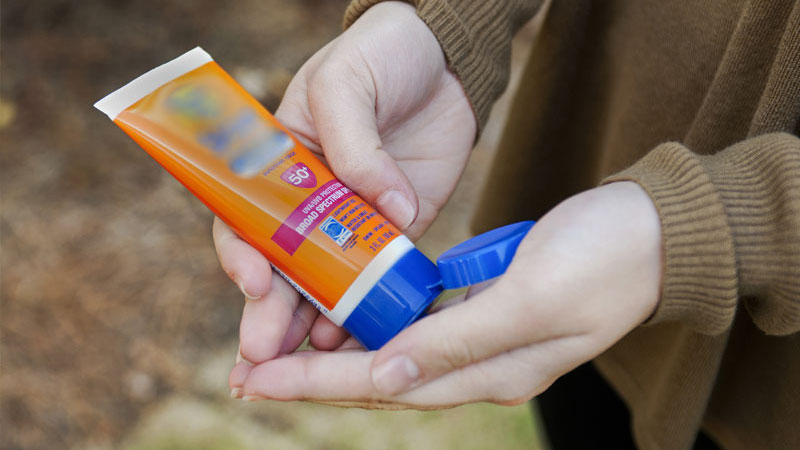
Summertime is synonymous with fun in the sun, especially for those who enjoy the long hours and abundant water activities. The down side is that all that sun can damage the skin.
“It’s easy to forget that the skin is the body’s largest organ,” says Chong Yun, M.D., a board-certified family physician with USMD Carrollton Clinic. “As such, your skin is exposed to a lot of environmental factors.”
While sunshine does provide essential vitamin D, it’s important to remember that the sun’s rays also contain intense electromagnetic radiation, which causes nearly 90 percent of the wrinkles, deep lines, blotchiness and sagging skin chalked up to unavoidable signs of aging. It also triggers mutation in the DNA of our skin cells, which can cause skin cancer.
Despite the scientific evidence, medical warnings and sun-safety awareness campaigns, skin cancer is on the rise in the United States. According to the Skin Cancer Foundation, more than 9,500 people in the United States are diagnosed with skin cancer every day. And each year there are more new cases of non-melanoma and melanoma, the deadliest form of skin cancer, than all the cases of breast, prostate, lung and colon cancer combined. In fact, one American dies of melanoma every 54 minutes.
Luckily, damage from the sun can be reduced and even prevented.
“There are easy ways to protect your skin,” says Dr. Yun.
First, always wear sunscreen.
“You definitely need to wear sunscreen with a minimum SPF of 30 anytime you’re outdoors,” Dr. Yun says. “It’s also important to choose the right type of sunscreen. There are actually two types of sunscreens, physical and chemical.”
Physical sunscreens usually contain zinc oxide or titanium dioxide that deflect UV rays off the skin so they aren’t absorbed. They begin working right away and provide broad-spectrum UVA and UVB protection.
Chemical sunscreens work differently. They absorb the sun’s radiation and cause a chemical reaction that changes UV rays into heat, which is then released from the skin. Chemical sunscreens take about 20 minutes to begin working once they’re applied.
“Both physical and chemical sunscreens are fine for adults,” Dr. Yun says. “But physical sunscreens are best for infants older than six months and children since they aren’t absorbed by the skin. You can find them in sunscreen sticks—which are great for kids because they’re easy to apply and have less chance of running into their eyes.”
All the sunscreen in the world isn’t going to help much if it’s not used properly, so remember to apply enough and apply it often.
Use at least one teaspoon of sunscreen to the face and neck area, a total of two teaspoons to the front and back of your torso, one teaspoon to each arm, and two teaspoons to each leg. And do so more than once.
“People often forget you have to reapply your sunscreen for continued protection,” Dr. Yun adds. “If you’re going to be at the beach or outdoors for a while, reapply sunscreen every two hours.”
Even the most devoted sunscreen users can be at risk for developing skin cancer, so it’s important to do a skin check regularly to detect any changes.
Use the ABCDEs of skin cancer can help detect melanoma early:
Asymmetry – Moles, lesions or birthmarks in which one side does not match the other.
Border – Moles that have ragged, notched, or blurred edges.
Color – Any unusual coloration, including shades of brown, black, or patches of pink, red, white or blue.
Diameter – Any marks larger than one centimeter (the size of a pencil eraser).
Evolving – Moles or lesions that are getting larger, changing color or that look different from others on the skin, especially if there is itching or bleeding.
If you notice any moles or lesions that fall within the ABCD guidelines, show them to your primary care physician.
“Your doctor can easily perform a shave or punch biopsy in the office,” says Dr. Yun.
To further protect yourself and family, remember to:
Wear protective clothing. Though wearing less clothing on hot summer days is tempting, it’s best to stick to long-sleeved shirts and long pants to protect your skin from harmful UV rays. Choose loose, light-colored clothing made from natural fibers like cotton and linen. Natural fiber cloth breathes and will help keep your skin cool.
And don’t forget a wide brimmed hat to protect your face and ears, and wrap-around sunglasses to protect delicate eye tissue from damage from UVA and UVB rays.
Protect the youngest family-members.
A rash guard, hat, sunglasses and the shade of a big umbrella will protect infants at the beach. If adequate clothing and shade are not available, a minimal amount of physical sunscreen with titanium dioxide or zinc oxide with at least SPF 15 can be applied to small areas like the face and back of hands.
